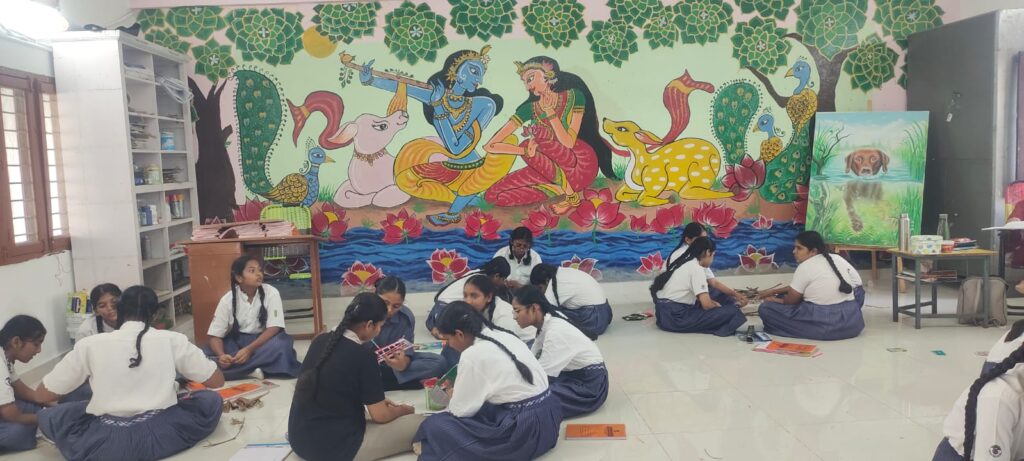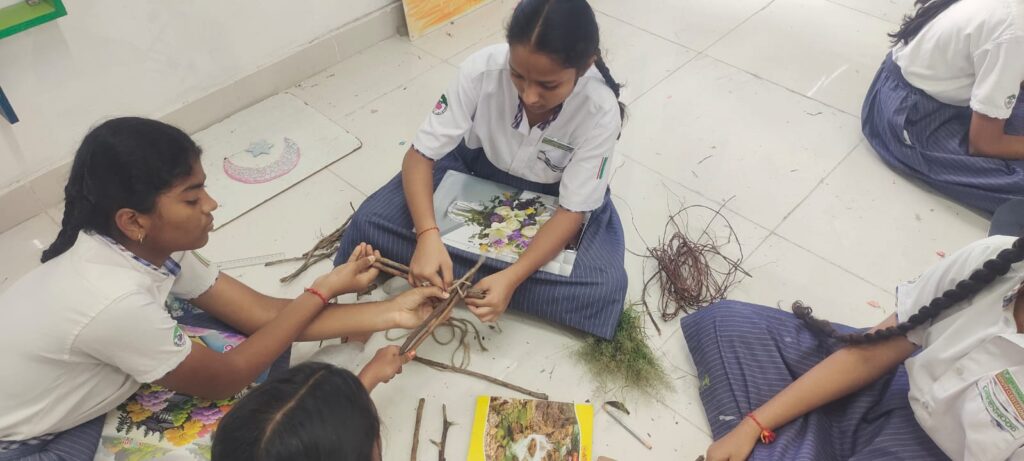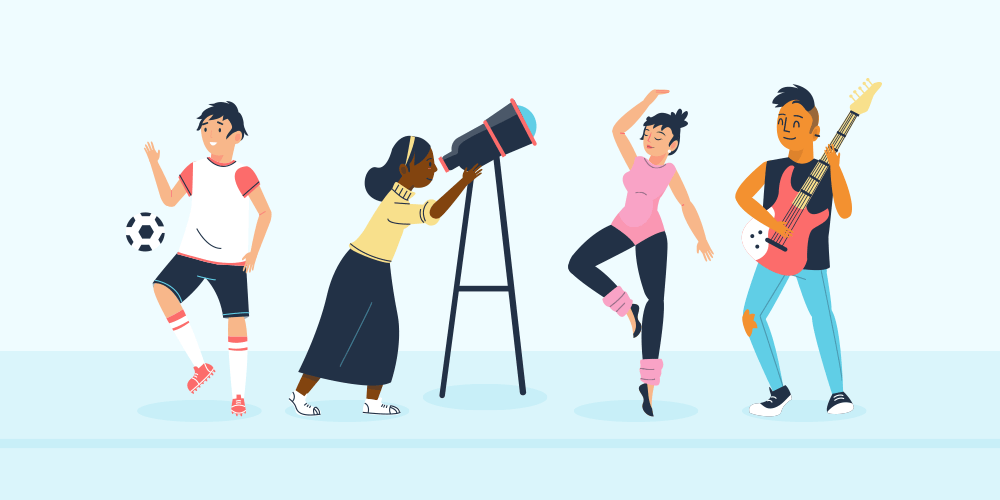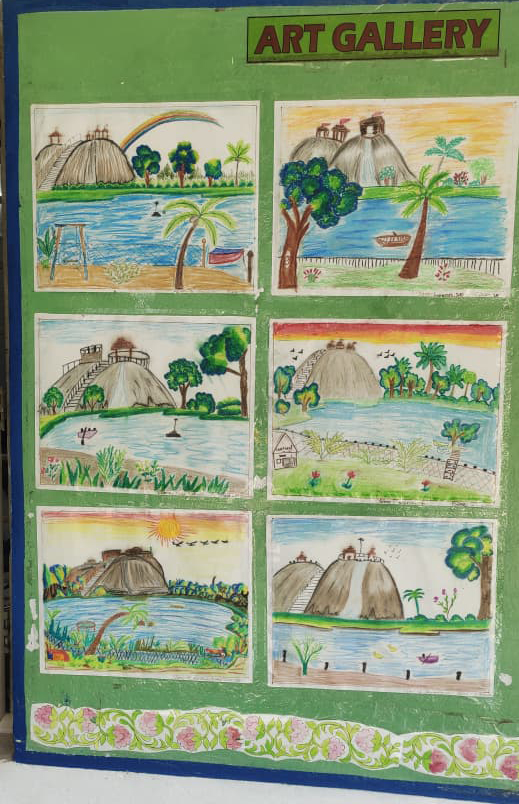Art Integration in Schools
Learning with Joy!

Have you ever painted a picture to explain a story? Or sung a song to remember a science concept? That’s exactly what Art Integration means! It is a way of teaching where art is not only a subject of its own, but also a tool to make other subjects easier and more enjoyable.
Instead of just reading and memorizing, children get to draw, act, sing, dance, and create – while learning important lessons in Math’s, Science, Social Studies, and Languages.
Why do we need Art Integration?

The National Education Policy (NEP) 2020 and CBSE guidelines tell schools to bring more art into classrooms. The reason is simple: art makes learning joyful.
When children express ideas through drawing, drama, music, or crafts, they understand the topic better and remember it longer.
Art also builds important life skills: creativity, teamwork, confidence, and respect for culture.


How does it help students?
Better learning: A history lesson can become a play; a science concept can be shown through a model or dance.
More fun in class: Children enjoy learning when they are active and creative.
Cultural pride: Using local art forms and traditions in projects helps students connect with their roots, and also learn about the art of other states through the Ek Bharat Shreshtha Bharat programme.
All-round growth: Along with knowledge, students also grow socially and emotionally.

What does CBSE say?
CBSE has made art-integrated learning an important part of school work:
Every student from Class I to X must take part in at least one art-integrated project in each subject during the year.
At least one project should include the art form of a paired State/Union Territory to encourage cultural exchange.
These projects are not extra work – they are part of the internal assessment and help children show what they have learnt in creative ways.


How can we do this in school?
- Projects and Models – For example, making posters about water conservation in Science, or drawing maps and folk art in Social Studies.
- Storytelling and Drama – Acting out a lesson from English or History.
- Music and Dance – Using rhythm, songs, or dance steps to explain concepts.
- Clubs and Celebrations – Art, drama, and music clubs, as well as exhibitions during annual functions and festivals.
- Teacher–student teamwork – Subject teachers and art teachers working together to plan activities.
- In Simple Words…
- Art Integration makes classrooms happy places! It helps children:
- Learn with interest
- Express themselves freely
- Discover their culture
- Grow into confident, creative individuals
- When art and academics go hand in hand, learning becomes not just about marks, but about joy, imagination, and life-long skills.
“When children learn with art, they don’t just study lessons – they experience them.”




